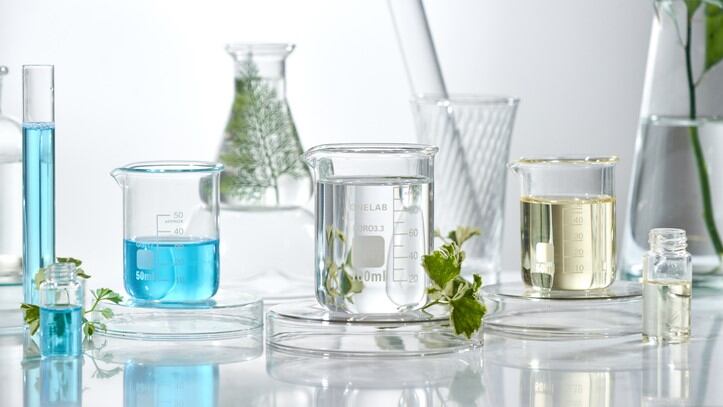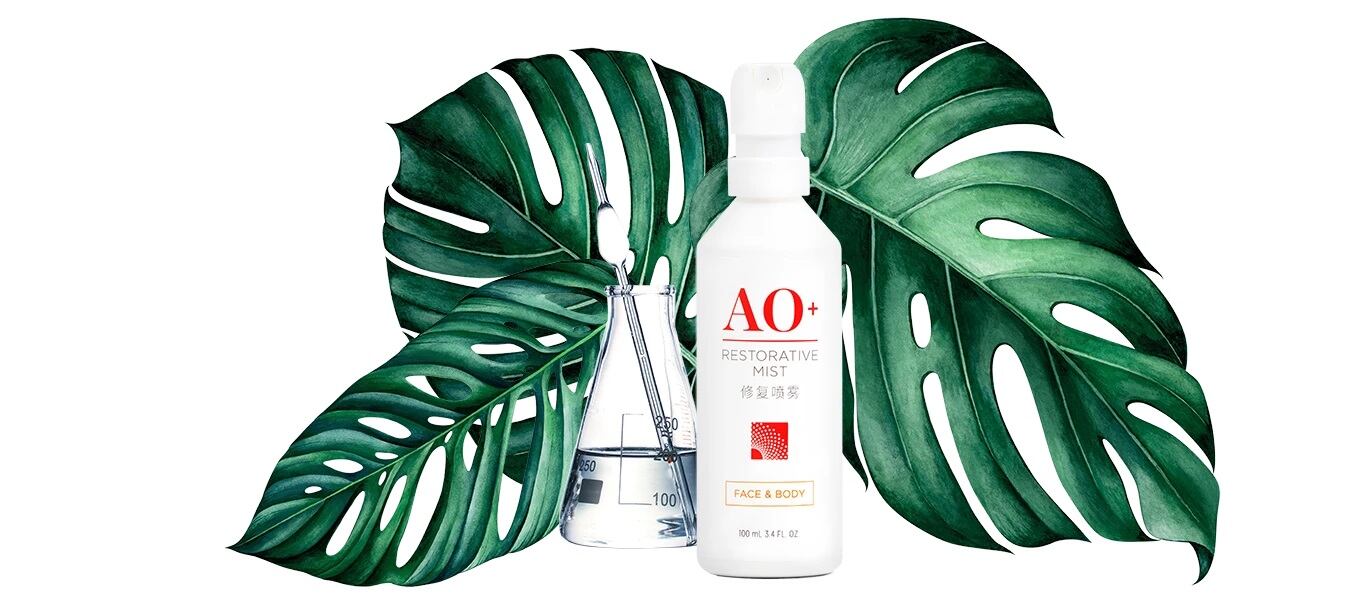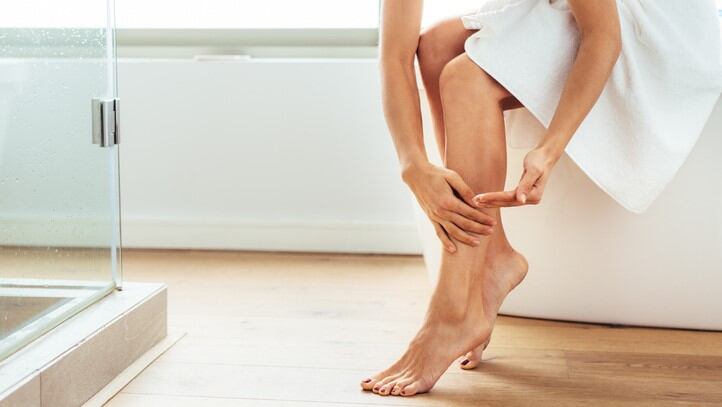1 – Five mega-trends that will affect China’s beauty industry – Insights from Dow
Dow believes there are five mega-trends have the potential to create the opportunities that can propel the growth of China’s personal care industry.
Jennifer Liang, Greater China commercial manager for home and personal care said: “We see big areas of growth which will take shape in the next several years.”
The first mega-trend the company has observed is the rise of the middle-class.
“The growing middle class globally translates into more disposable income creating more market potential and this will create a new need for products that offer new benefits at more affordable costs,” explained Liang.
This would then lead to the second trend, which is increasing urbanisation. This will contribute to urban pollution and drive consumers to seek products with anti-pollution properties.
“With 68% of the world’s population predicted to live in urban areas by 2050, consumers will seek more products that protect them from external aggressors.”
She elaborated: “The flood of people moving into urban areas will create a growing demand for products that protect and revive our skin from the urban environment, leading companies to invest in efficient skin health and skin protection technology.
2 – Vegan collagen: Korea’s AHC adds Geltor’s human variant to best-selling eye cream
Geltor’s vegan human collagen is now being used in Ageless Real Eye Cream for Face, the latest version of AHC’s best-selling eye cream range.
AHC is manufactured by Kolmar Korea, which said the deal reflected growing consumer demand for high-performing clean animal-free products was increasing.
HumaColl21 is a commercial human Type 21 collagen, which was identified by Geltor as essential to the generation of type-2 and type-3 human collagen, which help to maintain the elasticity and youthfulness of skin.
It is the second product from Geltor after Collume, which was previously known as N-Collage.
Geltor claimed that the product can improve skin collagen content, reduce wrinkles, frim skin, improve elasticity and miniaturisation.
Geltor co-founder and CEO, Alex Lorestani said: “HumaColl21 opens the door to not only better results, but a better overall process that can safely be used across beauty, the food and beverage industry, and beyond."
He added: “The benefits of biocompatible collagens are intuitive to customers in the Asian market, and the results we’ve seen in the clinical trials of HumaColl21 are completely backing that intuition up. We’re looking forward to working with select partners throughout Asia-Pacific on building breakthrough brands with this bioactive collagen.”
3 – Biodegradable beauty: Lonza utilises sea plant-based gel to create sustainable sheet masks
Lonza has developed a sustainable solution to disposable facial masks and patches, which it believes will be a game-changer for the category.
The all-natural and biodegradable gel material is made out of agarose, a seaweed found off the shores of Spain and morocco.
Under the brand Sea+, the company has created five proprietary blends that work best with the agarose gel that tackle concerns from anti-ageing to acne.
According to Jennifer Clancy, global head of marketing, Lonza is the largest supplier of agarose.
“Agarose is often challenging to use in personal care because it is a very expensive seaweed. It is important for us to introduce agarose to the market in a way that customers can afford and be disruptive in important categories like facial masks – using it as a delivery system, not just an ingredient.”
4 – Japan’s hair care trends: Kao taps into demand for anti-ageing conditioners and more mild shampoos
Kao’s chemical division has created two new hair care solutions, which is believes taps into two of the most pressing demands from Japanese consumers – namely products with anti-ageing benefits and more mild properties.
Moe Yoshizawa, chemical business global, pharmaceuticals and toiletries, Kao Corporation, told CosmeticsDesign-Asia that its clients are increasingly asking for ingredients that can fulfil the demands of the anti-ageing hair care market.
Quartamin E-80K was launched 10 years ago as a replacement for behentrimonium chloride (BTAC) but Kao’s new research shows that it is an effective ingredient for anti-ageing hair conditioner.
Yoshizawa explained that creating an anti-ageing hair conditioner could be complicated. “To make this hair conditioner, volume and smoothness is both needed, but it’s hard to fulfil both criteria because, for example, if you have smoothness, there is less volume.”
Through a series of tests, the company found that Quartamin E-80K was superior to BTAC. Aside from giving hair a smooth texture, it is able to improve hair volume and hair bounce up to 25% and 20% respectively.
5 – Sustainable personal care: Moving away from palm oil is ‘not the solution’ - Croda
Avoiding palm oil all together instead of opting for sustainable palm usage is not the solution to achieving sustainable personal care, as alternatives could carry even more severe results, according to a Croda director.
At this year’s edition of the ACA Leader’s Forum, Magali Bonnier, Croda’s research and technology director, personal care, APAC, spoke about the importance of sustainable palm in the personal care industry, saying that one of the answers to a sustainable industry lies with palm oil itself.
“In personal care, 70% of all the materials we use to make all those great products are derived from palm oil. It is the core of our industry,” said Bonnier.
Unfortunately, she added that there had been a lot of inaccurate and messages about palm oil among consumers.
“I've heard that [the personal care industry] is responsible for all the issues related to palm oil but personal care is only estimated to use 2% of the world's palm oil.”
While substituting palm oil may have marketing appeal, Bonnier pointed out that an alternative can potentially aggravate the environmental and social issues along the supply chain.
6 – Greentech launches anti-hair loss active derived from traditional South East Asian ingredients
Greentech was at in-cosmetics Korea this year to mark the official launch of its new anti-hair loss active ingredient, Hairiline, that claims to prevent hair loss and boost hair density.
The French biotech company plans to launch the ingredient globally next year at in-cosmetics Global. In the meantime, it is currently only available in Korea.
“We launched in Korea first because we believe it’s a market with a lot of potential for the ingredient. Just three days at in-cosmetics Korea and we can already see the demand because there are many people coming and asking us about it,” Tatiana Bourrelier, export manager, Greentech.
The new active is derived from the roots of the Lindera strychnifolia, a small shrub native to South East Asia.
“In SEA, it is known as the elixir of life and is a symbol of longevity. It’s very rich in polyphenols and tannis mostly, so that’s why we decided to develop it for our active ingredient,” said Bourrelier.
She noted that it was important for the company to source ingredients from more parts of the world.
“At Greentech, we make it a point to source our ingredients from each continent so we can protect the biodiversity. There are many ingredients out there and you can find an ingredient with good properties in other regions. We are definitely seeing a lot of ingredients in the market now coming for more parts of the world.”
7 – Next big buzzword? Ichimaru Pharcos targets ‘skin thinning’ concerns in rapidly ageing Japan
Ichimaru Pharcos has developed an organic anti-ageing ingredient, SpringMint, to tackle skin thinning, which it believes is set to be one of the new buzzwords in the anti-ageing category.
Hayato Kotani, international leader for Ichimaru Pharcos told CosmeticsDesign-Asia that the anti-ageing category was an important in Japan due to its rapidly ageing population.
According to statistics from the Japanese government, those aged 65 years and above made up 27.7% of the population in 2017, marking a record high.
At this rate, Japan would age progressively faster compared to the US and European countries.
This would drive the demand for anti-ageing products, however, Kotani said this posed a challenge for cosmetic companies which now have to innovate to stand out from the crowd.
“There are many people looking for anti-ageing products and a lot of anti-ageing products. So we had to develop a new keyword and develop new science. We found this keyword by reading many publications and papers,” he said.
8 – ‘Positivity in a jar’: Givaudan’s new ingredient shows microalgae potential in cosmetics is ‘unlimited’
Givaudan believes microalgae holds limitless potential to fulfil consumer demands for clean and effective beauty products, while simultaneously boosting moods.
“[The] potential is unlimited,” said Fabrice Lefevre, innovation and marketing director at Givaudan Active Beauty.
He added: “We screen lots of microalgae in our lab located in a protected area in France and much more will come soon from this platform to the market,”
Lefevre believes the company’s latest marine biotech-based ingredient, Sensityl, is a good example of how microalgae can change the beauty industry.
Givaudan claims that Sensityl is the first ingredient of its kind that can positively influence mood, thanks to its soothing benefits.
“Sensityl will revolutionise the future beauty market by giving shape to products acting simultaneously on skin and mood. So far the mood dimension from cosmetic products was mainly driven by their texture and fragrances,” said Lefevre.
The ingredient is extracted from microalgae which the company grows in sea water in Brittany, France, where Givaudan’s Marine Biotechnology Centre of Excellence is based.
9 – Clean beauty in Korea: Daebong Life Science launches natural oils to capitalise on trend
South Korean cosmetics firm Daebong Life Science debuted its natural oils developed especially for clean beauty products at this the recent in-cosmetics Korea show.
Rachel Kim, assistant manager, Daebong Life Science, told CosmeticsDesign-Asia that the clean beauty trend was gaining momentum in South Korea.
“Our company is focusing on natural ingredients development. The reason why we developed natural oil is because of clean beauty, it is the big trend at the moment. We hope to develop replacements for silicones and chemical oils for clean beauty products.”
Among other ingredients showcased at the trade show in Seoul was Korean Citron Oil, which is derived from the Yuja fruit grown on Jeju Island.
“Citron is cultivated in Japan, China and Korea. Korean citron is very famous. This is because it has thicker peels and higher sugar content. The Korean citron we use is cultivated in Jeju Island, in the Southern part of the country. It’s near the sea, which influences the harvest positively,” said Kim.
10 – Texture trends: Discerning Asia’s geographical contrasts key to creating appealing products
Understanding the geographical and environmental difference between the regions within Asia is becoming increasingly important to create textures that resonate with Asian beauty consumers.
The climate in the warm equatorial region Asia differs greatly from the temperate North Asian countries and this results in varying preferences in terms of texture.
“In South East Asia, where it is warmer and more humid, consumers look for gel-type textures with fast-absorption rates. In the north, where there are four seasons, consumers may opt for cream textures to protect skin from drier weather,” explained Frederica Lam, regional marketing manager APAC, Lucas Meyer Cosmetics.
Lam believes cosmetic companies need to do more to better understand consumer preference and the different regions in Asia.
“I think we are still at the beginning, taking small steps towards better understanding exactly what textures the consumer wants in reference to their environment.”
For instance, there are subtle differences among countries within SEA.





